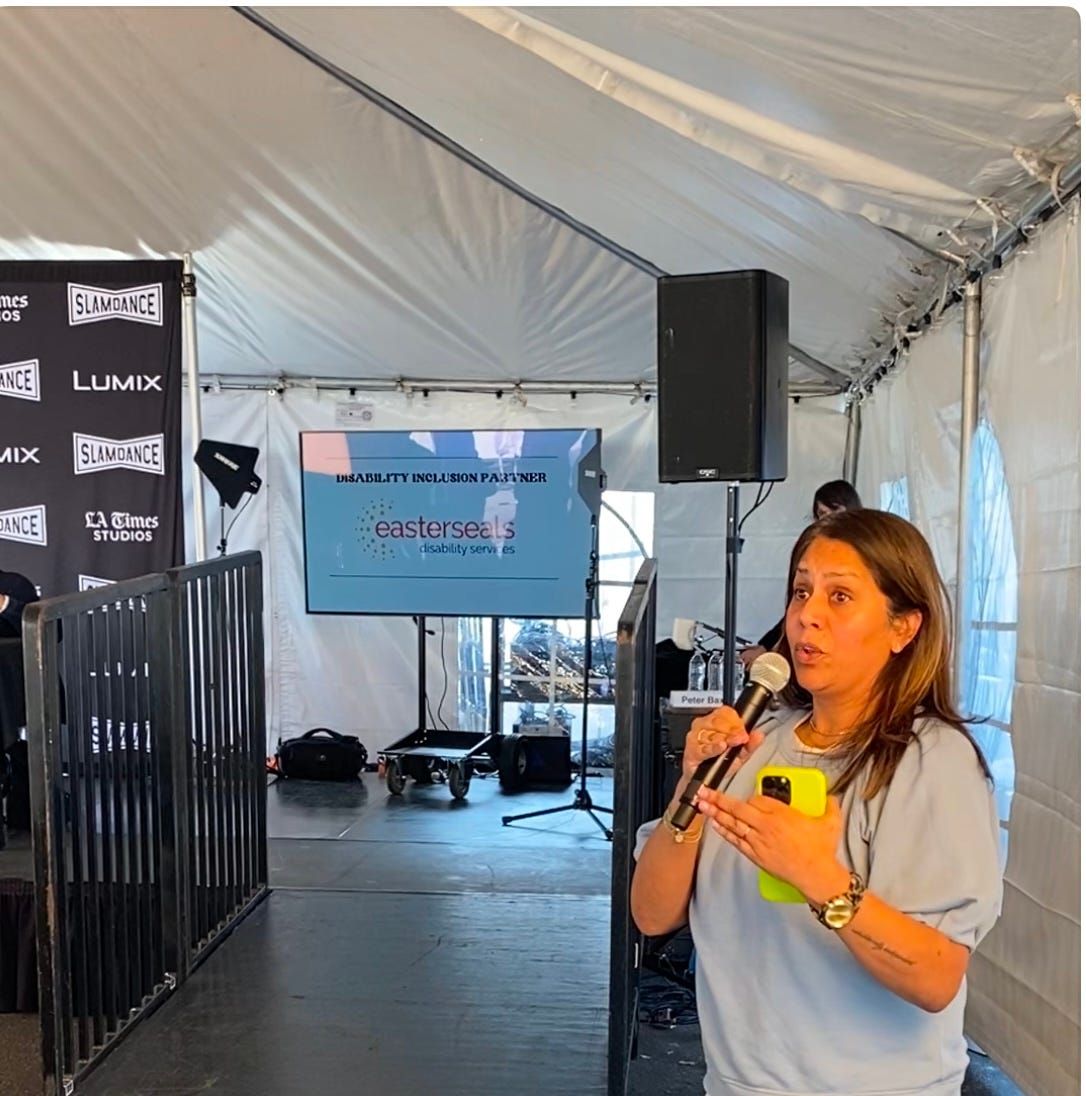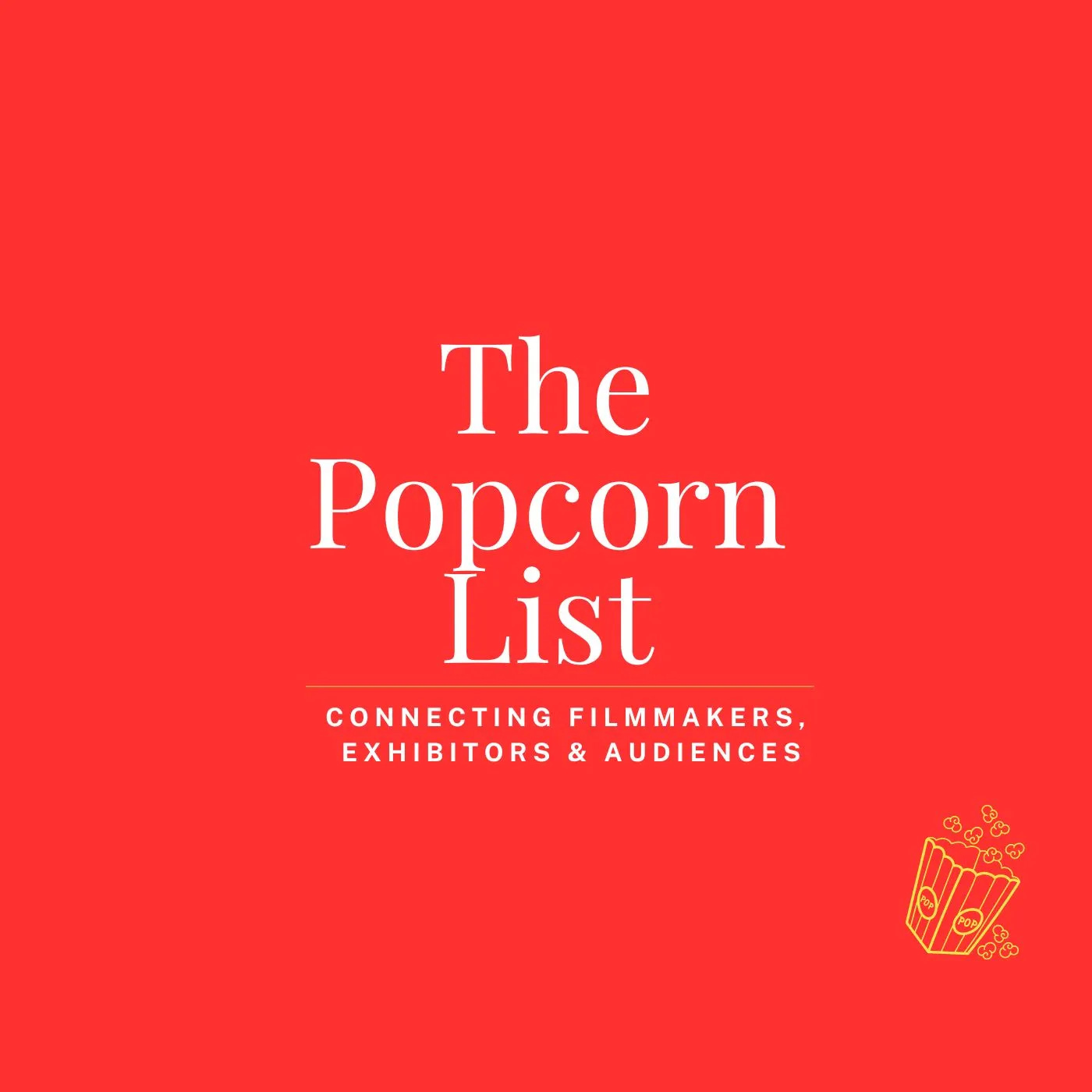"Getting your film in front of audiences is a fucking marathon."
Talking about creative producing, producing a festival and fixing the broken pipeline with Lela Meadow Conner
The word “powerhouse” gets thrown around a lot, but Lela Meadow Conner actually is one. In addition to producing and programming independent films, she is one of the founders of The Popcorn List, an annual survey of acclaimed feature films without US distribution, curated by film festival programmers. (This year’s list includes my friend Jessica Blank’s feature, Brooklyn, Minnesota.)
I met Lela at the Bentonville Film Festival—where Ramona had her world premiere—and apart from being an excellent person to hit an opening night party with, Lela has proven herself to be, well, um…like I said, a powerhouse. A woman who has both the vision and the capacity to create change. In Lela’s words, “getting your film in front of audiences is a fucking marathon, and anyone who doesn’t treat it as such, is in for a lot of disappointment.”
Here’s a bit of her story and our conversation:
BB: Take us through your career as a producer.
LMC: I always loved movies and TV as a kid and have such distinct memories of seeing specific films at the theater. My aunt, who was a jockey, took me to see The Black Stallion. I don’t remember a whole lot other than sitting in a dark, smoky theater. I can specifically remember seeing E.T., Ghostbusters, Dirty Dancing, When Harry Met Sally—so many classics of the 80’s.
Then, of course, there was Blockbuster, where so many of us Gen X-ers cut our teeth discovering films, and I found some of my favorites of all time, films like Ferris Bueller’s Day Off and Stand by Me.
Movies were essential to our coming-of-age, a place where we could really see ourselves reflected back (in dialogue and actions, if not always in the teased bleach-blonde or zinc-pink lewks.)
Even though I had planned to go to UVM after high school and study Poli Sci, I took a year off and ended up at Cal State Northridge for film school. There, I started to really learn about film history, especially the films of the late 60’s and 70’s. I shot and spliced my short on actual film—how’s that for feeling midlife?. From there, an internship working with a talent manager introduced me to Tim Gruver, who would soon become my best friend.
Tim was a gay, adopted Native American, a former Mormon from Kansas; I’m also an adoptee, South Asian, raised Quaker-ish, from Boston. We smoked a joint and became inseparable. Though our backgrounds couldn’t have been more different, we shared a sensibility around movies and storytelling, and even though we were broke-ass young adults, we started a production company called Wild Indians. We had some projects in development, took some meetings “on the lot” and made a few shorts. Tim was not afraid of anything, and it was a really fun way to spend some of my early 20’s—until we realized we needed actual jobs. (Spoiler alert: not much has changed as a producer.)
We both went on to other gigs. Most formative for Tim were Outfest and the LA Film Festival; and for me, a trailer marketing agency and a job working in publicity, which began my transition from the Hollywood of it all to independent film.
In 2003, Tim moved back to his native Wichita to start a film festival, Tallgrass, and asked if I was interested in coming to Kansas to produce. I had no idea what '“producing a festival” meant, and I had never been to Kansas, so I was like, “Fuck yeah!”
At first, I had a lot of preconceived notions about what Wichita would be like, and when I look back now I think, “Man, was I ever a coastal elite!” The very first night of the very first Tallgrass Film Festival, October 2003, we sold out two screenings of the film Bomb the System. I had truly never experienced a community come together so hungry for and excited about indie film. It was a hugely pivotal moment for me.
What happens next is too long a story, so the abridged version: I moved to Chicago to get the hell out of LA and attend culinary school; Tim passed away suddenly just before the third festival, and, together with some very incredible arts enthusiasts, we kept Tallgrass going in order to grow it into what it’s become today.
I moved to Wichita full time in 2011 to step into the role of Executive Director and remained until the fifteenth festival. I also work at the Bentonville and Woods Hole Film Festivals, and in 2017 become the Executive Director of Film Festival Alliance, where I spent five years, including during the pandemic, advocating for festivals across North America. That job affords me the opportunity to attend some amazing regional festivals across the US, including SIFF, Sidewalk, Cucalorus, Cleveland, and others.
In 2019, I founded mamafilm in Wichita as a pop-up microcinema in a shipping container. It was born out of a desire to talk about the motherhood and nurturing we see on screen, with friends and strangers, and has been evolving into a nomadic cinema, artist support organization and production company. Just like any child, you never know exactly what it will become in each stage of life.
But the desire to produce has never really left me, especially as I continue to meet so many incredible filmmakers at festivals across the country.
Around 2019, my friend Sav Rodgers, whom I’d met when he was a film student at University of Kansas, reached out and asked if I’d be interested in helping write grants for his personal documentary Chasing Chasing Amy.
Here’s a little secret: I really fucking hate grantwriting, but I love Sav and working with him in this way offered me my first real producing credit in years.
Working on Chasing Chasing Amy helped me identify my producing ethos: to try and always lead with reciprocity, fellowship, and purposeful ecosystem interventions. It has mostly served me well. And even when it hasn’t worked out, this ethos has taught me how to be confident in what I can bring to a project and how to advocate for myself. Most women of our generation know that we have to learn by doing.
Since then, I’ve produced a few narrative shorts and am working on a couple of documentary projects. For me, producing is holistic, and because I’ve spent so much time steeped in exhibition—just trying to get people to come watch movies—I’m always thinking of “audience first.” I love story and creative development. I love thinking about both traditional and nontraditional ways of getting eyeballs on a film, and so I love teaming up with other producers, especially those with line-producing skills. My brain was not built for spreadsheets.
BB: And what about your work as a programmer? What’s that like?
LMC: I come to programming with a few sensibilities. One is, of course, stories that resonate with me (reminder to all filmmakers: film programming is subjective AF) and second, wearing my “ED” hat: will this movie put butts in seats? So many film festivals and cinemas operate as nonprofits, so this is a hugely important consideration.
When I was at Tallgrass, I didn’t have much involvement in the programming, except for our gala films or more high-profile features. When I started the mamafilm microcinema, I curated nearly all of the movies we played. Some were great hits and admittedly there were a few misses. For our rePROFilm series, I’ve worked with a couple of exceptional film festival programmers, and I always enjoy the collaborative nature of programming.
For the last two years, I’ve had the privilege of working as a Programming Manager for the Athena Film Festival, which has been amazing because we work with Programming Fellows, folks who are new to the festival programming process. While we’re there as mentors, I end up learning so much more from them than I think they could ever learn from me! It’s been so much fun and a truly a wonderful way to create opportunities for burgeoning film programmers and indie film professionals.
One thing I just have to say here, to remind both readers and myself: just because you know a festival programming team, and you’re friends with them, doesn’t mean your film will get in. There are a lot of films out there, and yours just isn’t for every festival. And this could be for a variety of reasons that may even be out of the programing team’s control.
That said, I really admire all of the programmers I know, specifically the way they are able to critically and thoughtfully watch all the movies they do in any given year. (Good people to follow on Letterboxd.)
I also want to give a special shout-out to shorts. I used to be a feature film snob. But I have zero time in my life, and I have two kids who watch stuff on YouTube. Shorts are fantastic, and I am a big proponent of making them as proof of concepts for long-form work.
BB: What changes do you think need to happen in the film ecosphere and how has your work helped to instigate those changes?
LMC: How much time do you have? Here are five things that come to mind:
For filmmakers: Filmmakers—especially directors—need to be thinking about distribution from the very inception of the project, whether it’s doc or fiction. Too often, I see them thinking financing and production are the hardest parts of the process. But what good is any of that if you don’t have a plan A, B and maybe even C, to get your film out into the world—even with a market festival premiere?
For funders: There should be more money and grants available for distribution and exhibition—Distribution Advocate’s FilmADE is so great, and we need more initiatives like it. I get it, funding a film is sexy, but how sexy is it when no one sees the movie with your credit on screen? Maybe there should be a new Distribution Producer credit on par with an EP credit.
For distributors: Please only work with films and film teams that you really, truly, believe you can help get in front of audiences that they wouldn’t be able to find on their own. Otherwise it’s a big waste of everyone’s resources. The pipeline is broken; we need to work toward fixes together, or we all lose.
For exhibitors: I have spent more than 20 years advocating for in-person exhibition and will always continue to do so. At the same time, we need to meet audiences where they already are—or aren’t for that matter. In Wichita, I’ve started doing some happy hour + short film screenings at local bars and galleries. I know people are busy, they want to connect around a film, they want to meet up with their friends for a drink, they want to be home by 6pm. These events have been a really great way to gather a certain demographic—often busy moms—around movies. And part of getting people to come back to communal moviegoing—and bring their kids—is to get them excited about it.
For audiences: If you want to continue to have nice things, like arthouse cinemas and film festivals, buy the tickets and the popcorn!
BB: Well, speaking of popcorn, tell us about The Popcorn List!
LMC: My colleague Barbara Twist and I founded The Popcorn List in 2024. It’s an annual survey of highly enjoyed feature films without US distribution (theatrical, digital or self), recommended by film festival programmers across North America. Think of it like The Black List for indie films that have played on the festival circuit and are still looking for meaningful distribution.
We see it as a discovery tool for exhibitors, distributors and audiences. We launched the first Popcorn List in Spring 2024, the Genre List in March, 2025, and the current Popcorn List in late April, 2025.
The idea was born after we noticed several art houses and independent exhibitors were frustrated by a lack of titles available to them post-pandemic (they traditionally work directly with distributors and bookers), coupled with the fact that Sundance had over 6,000 films submitted that same year—I know, I got the rejection email myself!
Clearly a lack of films was not the problem. I’ll let you draw your own conclusions about what that problem is—I am sure everyone has their thoughts. But this was a way that we could bring attention to some “festival darlings” recommended by the people whose literal job it is to bring great films to their communities.
Our goal is to continue to find partners to help us amplify these films and connect them to opportunities. We have some cool partnerships we’re working on for this next iteration of the list, and I just get excited about the possibilities, especially where we are right now in this ecosystem.
BB: How do you balance your creative life and raising kids?
LMC: There’s no balance. I’m a Gen X-er with aging parents who live halfway across the country, a teen and pre-teen daughter, and luckily a really supportive partner, who is just trying to figure out it like everyone else. The one thing I try and keep it mind, is that we need to give ourselves as much grace as we afford to our best friends—we’re always the hardest on ourselves.
BB: Anything else you want readers to know?
LMC: If you like fancy toast, you can follow me on Instagram. I take some relief in knowing, if this film thing doesn’t work out, I can always fall back on my knife skills.
Read more about Lela here! And follow her on Substack!
And here’s some homework: this week, see a movie! Any movie! Ideally in a movie theater but if you have to lower your expectations (I’m a working mom, I rarely get to the actual cinema!) go for it. And report back.
Last week, my husband and I streamed David Cronenberg’s ExistenZ on Metrograph. I hadn’t seen it since the 90’s and it totally holds up. What can you watch this week? I want to hear all about it.
Love,
Brooke
PS: Ramona at Midlife will screen for one night at the Wayfarer Cinema in Highland Park, IL, Thursday May 8, 7pm. If you’re in Chicago, come see us! I’ll be there along with actors Yvonne Woods, Joel de la Fuente and Brian Slaten. Tix are available here.






